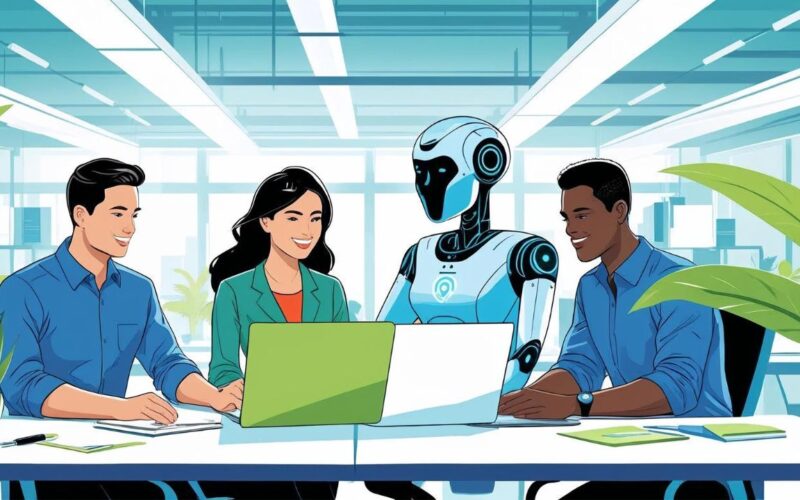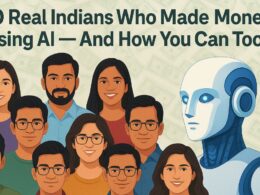There is a lot of noise out there about AI taking over jobs. And sure, AI is changing how work gets done but not always in the way people fear. In 2025, the most forward-thinking businesses are not using AI agents to lay off staff. They are using them to boost output and reassign human talent to the stuff that really matters.
The truth is, AI agents are now capable of doing the work of three employees across many business functions. But instead of replacing people, they are acting more like digital teammates handling repetitive, time-consuming tasks so human teams can focus on higher-impact work.
Let us break down how this shift is playing out in the real world.
How AI Agents Are Replacing Three Employees — Without Causing Layoffs
AI Agents Are No Longer Just Tools — They Are Teammates
The AI tools of the past were passive. You gave them a prompt, they gave you a result. But in 2025, AI agents are active. They are not just supporting you they are actually handling workflows independently, just like a teammate would.
Take sales, for example. Instead of having three people handling research, follow-ups, and meeting coordination, businesses now use a single AI agent that does all of that and more. It can find leads, reach out, schedule calls, and even close smaller deals. It works across channels, logs everything into the CRM, and never takes a break.
This is not a gimmick. These agents are showing up in real businesses, right alongside human employees, quietly handling a lot of the behind-the-scenes work.
How AI Agents Are Changing Work Across Teams
You can see the shift across different departments.
In marketing, a single human content manager can now produce what used to take an entire team because an AI agent is drafting blog posts, writing captions, editing copy, and even handling formatting and publishing.
In customer support, AI agents handle live chats, emails, and support tickets 24/7. They know how to route issues, pull from knowledge bases, and keep the queue moving all without getting tired or missing a beat.
Finance teams are seeing similar results. AI now processes invoices, monitors cash flow, flags issues, and even helps with forecasting. Tasks that used to be divided between junior staff, analysts, and admin assistants are now done by one AI system in the background.
Even meetings look different. Instead of someone taking notes and emailing summaries, AI agents transcribe, summarize, and send out action items automatically right after the call ends.
And in sales, agents take care of follow-ups, reminders, and CRM updates, keeping everything organized while the reps focus on building relationships and closing deals.
Entire Workflows Are Now Handled by Orchestrated AI
The real power shows up when businesses start using multiple AI agents together.
Picture this: A customer places an order. One agent handles the inquiry. Another processes the payment. A third checks for fraud. A fourth updates inventory. A fifth coordinates the shipping. And it all happens instantly, with no human needing to intervene.
This level of orchestration used to require multiple people communicating across teams. Now, platforms are helping companies create AI-powered workflows that run smoothly, accurately, and without the lag of traditional handoffs.
This Is Not About Replacing Humans — It Is About Redeploying Them
Here is what often gets missed in the headlines: Companies do not have to let people go just because AI can handle more.
In fact, many are choosing not to.
Instead of layoffs, businesses are moving employees to more meaningful roles things that AI still cannot do well. Human workers are being reassigned to strategy, creativity, innovation projects, or roles that require emotional intelligence and context.
That shift means companies can scale output and reduce costs without losing the experience, loyalty, or institutional knowledge of their team. It is a win-win when done right.
Big Brands Are Already Making the Shift
This is not just a theory it is already happening at scale.
Microsoft, Salesforce, and other major players have built AI ecosystems that are transforming how teams operate. Their AI agents are now embedded into thousands of businesses, handling everything from sales and customer service to HR and IT support.
Microsoft’s Sales Agent, for instance, can handle the full sales cycle for lower-tier clients. Salesforce’s Agentforce offloads repetitive admin and communication tasks. These tools are not replacing teams they are reshaping them.
And the companies using them are seeing results: lower costs, faster delivery, better employee satisfaction, and more capacity to grow.
The Business Case for AI Agents Is Strong—But So Is the Human Case
According to recent studies, nearly 9 out of 10 business leaders believe that AI agents will replace many traditional roles unless companies proactively invest in upskilling and reassigning their teams.
That is the key takeaway. This shift is not about eliminating people. It is about changing how work gets done.
AI handles the grunt work. Humans do what only humans can think creatively, connect emotionally, lead with context, and adapt to new challenges.
And in that model, everyone wins.
Conclusion
AI agents in 2025 are not some futuristic idea. They are already replacing the workload of multiple employees across departments without cutting jobs.
They are helping businesses become leaner, faster, and more efficient. But more importantly, they are creating space for human teams to step into more valuable, creative, and fulfilling roles.
If used right, AI does not replace people it unlocks their potential.









